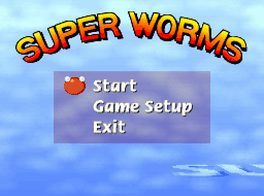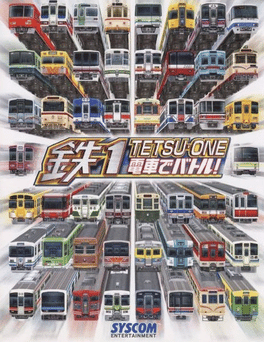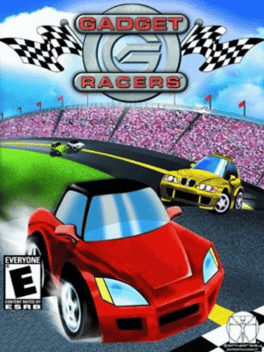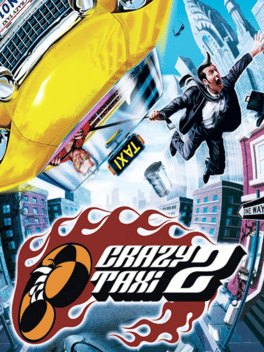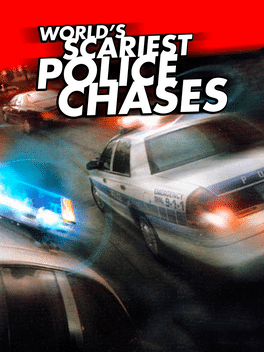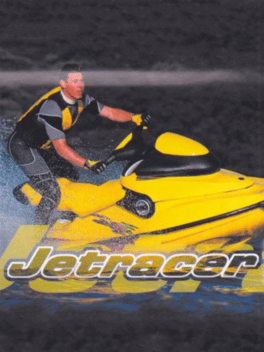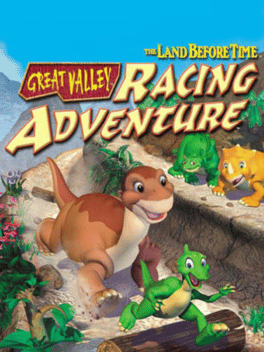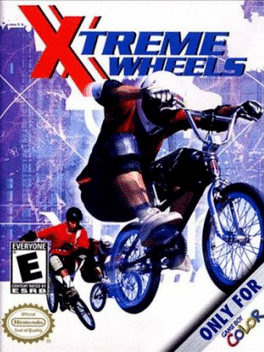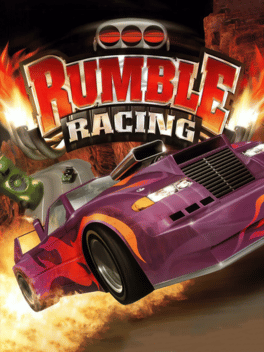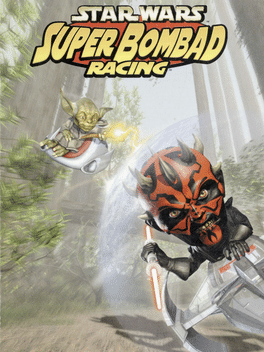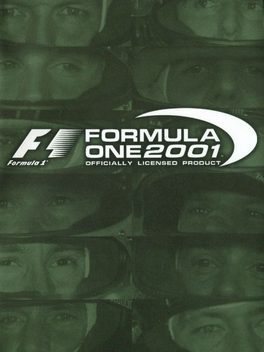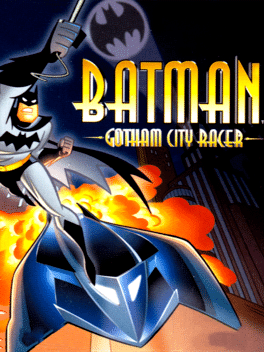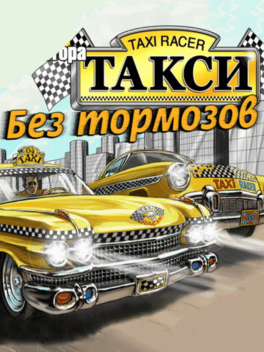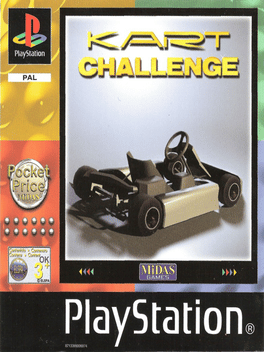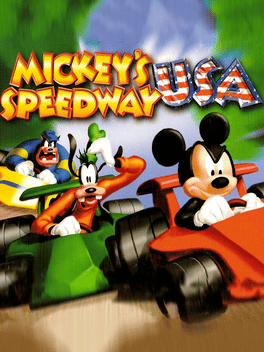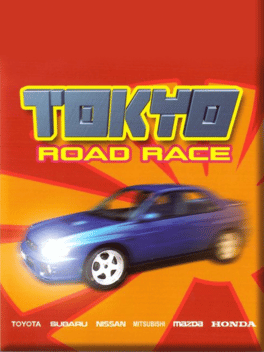New Racing Games - Page 108
-
Super Worms
2001
Super Worms
2001
A kart racing game with segmented "worms" in different colors instead of karts. Similar to older kart racing games, the game features a pseudo-3D view made up of flat sprites. The game has a racing mode where you can race against AI opponents or against another player and a battle mode for two players. -
Tetsu 1: Densha de Battle!
2001
Tetsu 1: Densha de Battle! is a Racing game, developed by Vingt-et-un Systems and published by Syscom, which was released in Japan in 2001. -
Gadget Racers
2001
Gadget Racers
2001
Gadget Racers is the first of two Choro-Q video games to be released on the Nintendo GameBoy Advance. -
Crazy Taxi 2
2001
Crazy Taxi 2
2001
star 7.1Much like the original, the core gameplay in Crazy Taxi 2 centers around picking people up at destinations which are highlighted with colored rings, and dropping them off at stated destinations. Crazy Taxi 2 added multiple pickups, which enabled the player to carry multiple passengers, (previously it was restricted to one passenger per journey). The game also saw the introduction of the "Crazy Hop" feature, which allows the player to jump over certain surfaces to save time, as they taxi passengers around the locations. By performing moves such as the "Crazy Hop" and the "Crazy Dash", the driver accumulates tips from their passengers, which increases the total score. This sequel includes a modified soundtrack with rock bands The Offspring and Methods of Mayhem. The game also has some online modes in the form of a scoreboard, and replay-sharing. -
World's Scariest Police Chases
2001
star 7.8World's Scariest Police Chases puts the player in the driver's seat of a powerful cop car with the goal of chasing down and apprehending a variety of criminals with diversely dangerous driving styles. The game offers over 50 miles of road and highway to patrol. A story mode follows the player's virtual law enforcement career and he goes up against more devious criminals and gains access to more powerful vehicles. Other modes of play allow more freeform law enforcement. When driving for law and order doesn't fit the mood, players also have the option of evading their fellow officers in the game's "Bad Boy" mode. Television host Sheriff John Bunnel adds commentary as players race toward mission goals. -
Jetracer
2001
Jetracer
2001
Jetracer is a Racing game, developed by Theyer GFX and published by Midas Interactive Entertainment, which was released in Europe in 2001. Race over some of the biggest waves on earth and experience the controls of four types of jet watercraft from a 700cc stand-up model, to an awesomely powerful 1200cc sit-down machine (Multiplayer Options/ Four different beach locations/ Freeride and Extreme Trick mode/ Championship mode) -
The Land Before Time: Great Valley Racing Adventure
2001
The Land Before Time: Great Valley Racing Adventure is a cartoon-styled racing game designed to offer nonviolent fun and challenges for kids of all ages. Favorite characters from the series of animated films speed over prehistoric courses stocked with tricky obstacles and special Treestar power-ups. Players can choose to challenge a computer-controlled dinosaur opponent or race against a friend as they guide Littlefoot, Cera, Ducky, Petrie, or Spike towards the finish line, in sunny weather or rain, through 3D environments set in The Land Before Time. -
Wild Riders
2001
Wild Riders
2001
Wild Riders is a cel-shaded bike racing game released for Sega NAOMI 2 arcade hardware in 2001. You pick from one of two characters Keith Raven or Trish Moon as they make their great escape from the police, racing through the streets of comic city as they simultaneously weave through traffic and avoid the cops. -
Xtreme Wheels
2001
Xtreme Wheels
2001
Are you bad enough to handle the best? The world's top BMX racers are ready to take you on, and you have no choice but to answer the call. You'll start at the bottom of the rankings, trying to work your way up the ladder by mastering 20 grueling courses and nailing difficult tricks. The object is to earn as many licenses as possible, which will earn you the right to compete in higher classes. Needless to say, the competition will get smarter and quicker as you advance through the ranks, so you'll need to bring your sharpest skills to the table. There are four different classes to stretch your abilities, and you can actually earn new riders by notching a few victories. XTREME WHEELS is packed with varied hills, jumps, and terrain, so you might want to start off in Exclusive Training mode to get a grip on the handling and realistic physics that the game engine delivers. If you want to be the ultimate Xtreme racer, you'd better get cracking. -
Rumble Racing
2001
Rumble Racing
2001
Rumble Racing is muscle car mayhem for the next millennium. Race outside the lines and push custom cars to the limit with big air stunts and nasty tricks as you race for the Rumble Championship. Unlock new worlds and new tracks with each Gold Cup victory, racing alone or partnering up with a friend. -
Star Wars: Super Bombad Racing
2001
star 4.1Jar Jar throws his Bongo racing ride into warp speed with his very own exciting big-headed kart racer Star Wars: Super Bombad Racing! Everybody from Star Wars Episode I: The Phantom Menace has put their intergalactic troubles aside to enter into a wild racing adventure -- Queen Amidala, Anakin, Yoda, Obi-Wan, Sebulba, Bos Nass, Sebulba, and even Darth Maul are all out for that checkered flag. Each racer gets to ride special racing vehicles (a Pod Racer, a Sith Interceptor, a Naboo Fighter), and with the different vehicles comes individually geared racing controls. Once the green light flashes, it’s a crazy dash for the finish across famous STAR WARS locations, with flying missiles and colorful power-ups blasting all over the map. Get mad air off jumps and crack open secret locations to find all of the game’s hidden special features. All this action explodes off the screen with incredible special effects and dazzling graphics from the force of the PlayStation 2 computer entertainment system. Meesa can’t wait -
Formula One 2001
2001
Formula One 2001
2001
star 7.8Formula One 2001 is a racing video game for the PlayStation and PlayStation 2 developed by Studio 33 (PS1) and Sony Studio Liverpool (PS2) and published by Sony Computer Entertainment. It was released on 20 April 2001 in Europe, 24 September in North America and 11 October in Japan. It was the first game to support the Logitech racing wheel (a.k.a. GT Force) (PS2 only). Formula One 2001 was the last simulation Formula One game to appear on the PSone (as the PlayStation had become known by that point, to differentiate it from the PlayStation 2). It was also the last game in the series released in North America before the 2005 release of F1 Grand Prix for the PlayStation Portable. -
Batman: Gotham City Racer
2001
star 4Cruise as Batman, Nightwing, or Batgirl - or one of 23 criminals like The Joker, Mr. Freeze, Catwoman, and Killer Croc. Master 15 supercharged vehicles loaded with signature weapons like Batarangs, Laughing Gas, Cat Claws, Sewage Slicks, and tons more. Live Batman's world through 51 episode-based missions with real cut-scenes from the TV show. Go on a crook-bustin' free-for-all in Patrol Mode or start a wild crimewave as a Villain and leave Batman in the dust! Go head-to-head against a friend in Hero-vs.-Villain splitscreen. Blaze through the urban maze of Gotham in massive 3D-rooming environments and multiple angles. -
Stunt GP
2001
Stunt GP
2001
star 7.4And RC car racing game where doing spins, flips and other stunts earns you points that can be exchanged for upgrades. -
Taxi Racer
2001
Taxi Racer
2001
'Taxi Racer' also known as 'Taxi: Without the Brakes' is a high paced taxi-based racing game developed by Stellar Stone LLC in 2001. -
Kart Challenge
2001
Kart Challenge
2001
Kart Challenge puts you in the hot seat of karts capable of over 120mph! Racing around chicanes, through sand and gravel, and over the finish line, you will experience an intense kart racing experience against seven computer opponents across four international racing circuits. With precision controls that allow for graded acceleration, braking and gear changes, and fierce competition throughout, Kart Challenge provides an exhilarating racing experience. -
Smurf Racer
2001
Smurf Racer
2001
This kart racer features the Smurfs as characters. Choose one of eight (with four secret) characters to race with among various climates and regions. You can race in single player or championship modes, along with a Capture the Flag-style Flag Race. -
Surf Rocket Racers
2001
Surf Rocket Racers
2001
Surf Rocket Racers is a jet-ski racing game for the Dreamcast. As in most aquatic racers, success here depends on your ability to smoothly handle unpredictable waves and aggressive competition at the same time. There are several game modes to choose from. First up is the Championship. In this mode, you compete in a series of circuit races and accumulate points based on your finishing position. The racer with the most points at the end of the season wins. The other modes include a trick competition, a hazard and obstacle course, and a head-to-head 2-player mode. -
Tokyo Road Race
2001
Tokyo Road Race
2001
Take to the road in this white-knuckle thriller of from Taito. Choose from a wide selection of Japanese car manufacturers to race, from regular family saloons, to high powered rally cars. Contend with the varying conditions that courses throw at you, from the early morning mist to snow covered terrain. Features include six different car manufacturers, 40 various automobiles, ten courses, and three game modes.
